
“Hey. How do you reflect being promoted at your company, when your responsibilities didn't change realistically?” -- from Reddit
Getting promoted is a key career achievement—it proves your commitment, performance, and readiness for new challenges. How you present those promotions on your resume can strongly influence how employers view your career progression.
Should you show the promotions on a resume separately or group them under one company? What’s the smartest way to showcase your accomplishments without cluttering your resume?
Here are the best strategies—and examples—to help you highlight your promotions on your resume in a way that stands out. When showing promotions, your resume layout matters. You might consider using a resume header format to make your career progression visually clear.
How to Show Promotions on a Resume
There's no single "right" way to list promotions on your resume—it depends on your story. Here are 3 solid ways to choose from. Also, if you’ve held multiple roles in one company, your resume file name should reflect clarity, especially when applying online.
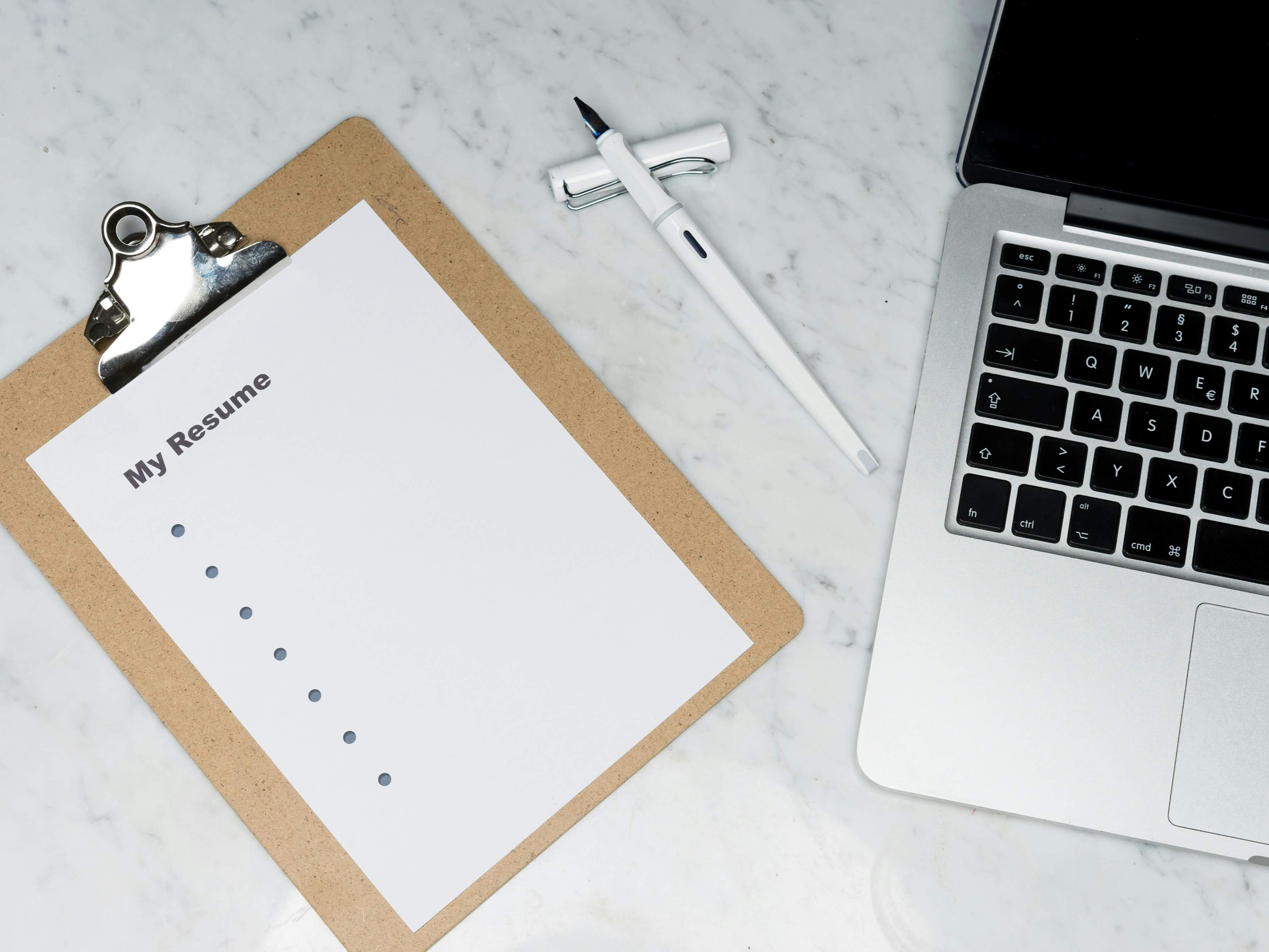
Stacked Entries (One Company, Multiple Roles)
If you’ve held several positions within the same company—especially within the same department—stacking your job titles under one employer is often the most effective approach. This format highlights your upward movement and keeps your resume organized. For guidance on formatting and writing your resume efficiently, check out our detailed guide on how to use Google Docs to write your resume.
Begin with your current or most recent role, listing the company name, location, and dates of employment. Mention your promotion briefly, then focus on your top accomplishments in that role.
Follow with your previous positions at the same company in reverse-chronological order. You can omit the company name and location for each of these, keeping the focus on your responsibilities and results.

Example
XYZ Corporation
| New York, NY
Senior Marketing Manager (Jun 2021 – Present)
Promoted for strong leadership, strategic execution, and consistent campaign performance.
- Lead a 10-person team and implemented data-driven strategies that boosted ROI by 35%.
- Managed a $2M marketing budget, improving lead conversion by 25%.
- Fostered cross-team collaboration, increasing customer retention by 20%.
- Launched a content marketing initiative that drove 50% growth in organic traffic.
Marketing Manager (Jan 2018 – May 2021)
Advanced after optimizing digital channels and elevating brand reach.
- Ran targeted email campaigns, improving retention by 15%.
- Conducted market research that enhanced ad targeting by 25%.
- Mentored junior marketers, improving team productivity and performance.
Marketing Coordinator (Aug 2015 – Jan 2018)
- Managed social media content, increasing followers by 40%.
- Coordinated email campaigns, raising open rates by 20%.
- Performed competitor analysis to support strategy development.
Stacked entries not only showcase your career growth clearly but also help employers quickly see the impact you’ve made at each stage. By organizing your roles this way, you tell a compelling story of progression—without overwhelming your resume with repetition.
Separate Entries (Across Gaps or Departments)
Using separate entries is the right choice if you left a company and later returned with a promotion, or if you advanced into roles across different departments. This format clearly shows career progression—especially when there's a gap or change in responsibilities.
List each position in reverse-chronological order as individual entries, just as you would for different companies. Include the company name, location, job title, and dates for each role, along with key accomplishments.

Example
XYZ Company
| Chicago, IL
Senior Product Manager (Mar 2022 – Present)
Rehired after gaining external experience and brought on to lead innovation initiatives.
- Manage a 15-person cross-functional team to improve product features and user experience.
- Use data-driven strategies to optimize performance, increasing revenue by 25%.
- Launched an AI-powered financial tool, boosting adoption by 40%.
- Align product strategy with market needs through cross-department collaboration.
ABC Company
| New York, NY
Product Manager (Jun 2020 – Feb 2022)
Joined a fast-paced startup to expand product development experience.
- Rolled out a digital payment feature that raised transaction volume by 30%.
- Improved app usability, reducing churn by 18%.
- Mentored junior PMs to promote innovation and growth.
ZXC Company
| Chicago, IL
Associate Product Manager (Sep 2017 – May 2020)
- Helped develop core features that drove a 15% increase in user engagement.
- Analyzed user feedback to improve product-market fit.
- Supported roadmap planning and executive presentations.
Listing promotions as separate entries helps emphasize distinct phases of your career—especially when there's a break in service or a shift in responsibilities. It gives hiring managers a clear view of your versatility, growth, and the value you brought at each stage, even across different roles or companies.
Same Entry (Minimal Role Changes, Clear Progression)
If you’ve been promoted within the same company but your core responsibilities stayed relatively consistent, combining your roles into a single entry is a smart way to save space while still showing advancement.
List the company name and location once, then include your job titles in reverse-chronological order with dates beside each. In your first bullet point, briefly explain the promotions. Use the remaining bullets to highlight your overall achievements during your time at the company.

Example
Quick IT Solutions
| Dallas, TX
IT Support Team Lead (Jan 2022 – Present)
Senior IT Support Specialist (May 2019 – Jan 2022)
IT Support Specialist (Aug 2016 – May 2019)
Promoted twice for outstanding problem-solving, leadership in process improvement, and consistently exceeding IT support KPIs.
- Managed a team of eight specialists, cutting ticket resolution time by 25% and streamlining the escalation workflow.
- Built a companywide knowledge base and training system, reducing onboarding time by 40% and boosting first-contact resolution rates.
- Led major infrastructure upgrades that improved system reliability and cut downtime by 30%, while enhancing cybersecurity in collaboration with IT security teams.
Using a single entry to show multiple promotions works well when your responsibilities have evolved gradually. It keeps your resume focused and streamlined while still making your growth and contributions clear—ideal for roles where consistency, reliability, and steady advancement are key.
How to Show a Promotion on a Resume Using a Stacked Job Entry
When you’ve earned several promotions within the same company, using a stacked job entry is one of the most professional and effective ways to highlight your career growth. This approach lets you present your evolving job titles and responsibilities clearly while keeping your resume concise and well-organized.
Begin by listing each job title in reverse-chronological order along with the dates you held each position. For clarity, place each title on a separate line so recruiters can quickly see your upward movement. Include the company name and location only once at the top, which reduces redundancy and creates a clean header for your work history.
For each role, craft bullet points that focus on your most significant accomplishments and responsibilities. Emphasize achievements that demonstrate increasing levels of responsibility, leadership, and impact. Use data and results where possible to show measurable contributions and progression over time.
Why this method works so well:
- Clearly demonstrates career advancement: Stacking roles under one company highlights your ability to grow, adapt, and succeed in increasingly challenging positions, making your professional development obvious to employers.
- Saves valuable space: By listing the company details once, you keep your resume neat and easy to scan, allowing you to fit more relevant information without clutter.
- Emphasizes cumulative impact: This format focuses attention on your overall contributions and evolving expertise within the company, rather than isolating each role.
- Makes it easier for recruiters to follow: A well-organized stacked entry helps hiring managers quickly understand your career trajectory, improving their engagement with your resume.
How to Show a Promotion on a Resume Using Separate Job Entries
When you’ve held distinctly different roles within the same company—especially if there were significant changes in responsibilities or a break in service—using separate job entries under a single company heading is an excellent way to clearly illustrate your career progression.
Begin by listing the company name and location once at the top to avoid repetition and keep your resume clean. Then, under this header, present your most recent position with its job title and the dates you held it. Use bullet points to thoroughly describe your key responsibilities, achievements, and the impact you made in that role.
Next, list your previous position as a separate entry beneath your current or latest role, including the job title and dates held. Again, use bullet points to highlight the unique contributions and successes specific to that earlier position. This separation allows you to clearly distinguish the evolving nature of your work, skills, and value within the organization.
Why this approach is so effective:
- It puts a strong emphasis on the differences between your roles, helping recruiters understand the specific tasks, skills, and leadership you developed at each stage.
- It clearly demonstrates your career advancement and growing responsibilities in a way that tells a detailed story of your professional development.
- By separating each role, you can tailor your descriptions and achievements to fit the context and expectations of that particular job, making your resume more precise and impactful.
- This format works especially well when there are distinct gaps, department changes, or substantial shifts in duties, as it avoids confusion and highlights your adaptability.
How to Show a Promotion on a Resume Using Entirely Separate Job Entries
When you want to highlight a promotion as distinct phases of your career—especially if the roles are quite different or separated by time—using entirely separate job entries is a clear and effective strategy.
Start by listing your job title, company name, location, and dates of employment for the earlier role. Use bullet points to describe your key responsibilities and accomplishments specific to that position.
Then, create a new, separate job entry for your promoted position. Again, include the job title, same company name, location, and dates of employment. Follow with bullet points that focus on your achievements and duties relevant to this new role.
Why this method works well:
- It makes your new job title and elevated position highly visible within your work history, catching recruiters’ attention immediately.
- Clearly illustrates career progression by separating each role under its own heading, which helps showcase your growth and increased responsibilities.
- Enhances readability and clarity for hiring managers, making it easy to distinguish how your skills and expertise have evolved over time across different roles.
More Ways to List Promotions on Resume
Depending on your career path and the story you want to tell, there are different strategies to effectively highlight your promotions:
- Emphasize your promotions directly within your bullet points.
- Showcase multiple promotions clearly and strategically.
- Clarify your job titles or evolving responsibilities when they don’t perfectly align.
Let’s explore each of these approaches in detail.
Showing Promotions Through Bullet Points
When your promotions come with evolving responsibilities, key projects, or measurable achievements, you can highlight them within your role’s bullet points. This approach works well to demonstrate growth without breaking your work history into multiple entries.
For example, you might write:
“Promoted to Sales Associate within 6 months for consistently exceeding monthly sales targets by 30%.”
Including this kind of specific promotion detail signals your upward momentum and accomplishments directly in context.
Highlighting Multiple Promotions
If you’ve advanced through several positions at the same company, you can use stacked job entries or separate listings to showcase your progression. However, it’s not always necessary to list every single promotion—especially if you have many.
Focus on the roles most relevant to the job you’re applying for, and consider summarizing older or less related positions without detailed bullet points—particularly if they are more than 5–8 years old. Prioritize the experiences and achievements that best align with your target role to keep your resume focused and impactful.
Clarifying Job Titles and Responsibilities
Sometimes your career growth isn’t reflected clearly in titles or duties. You may face one of two situations:
- Your responsibilities and scope of work have evolved, but your job title remained the same.
- Your job title changed, but your responsibilities stayed largely consistent.
For the first case, use your bullet points to highlight how your duties expanded over time. Lead with your most advanced responsibilities and key achievements, then include earlier relevant tasks afterward.
For the second case, stacking your job titles under a single company entry works well. Highlight accomplishments and projects that apply across both titles, making it clear you’ve maintained or grown your contribution even if the role name changed.
How JobHun Helps to List Promotions on Resume
JobHun offers expert guidance and practical tools to help you effectively highlight your career advancements. Whether you’ve climbed the ladder within one company or switched roles across organizations, JobHun provides tailored strategies to present your promotions clearly and compellingly. From formatting tips to powerful phrasing examples, our resources ensure your resume reflects your professional growth in a way that captures recruiters’ attention and boosts your chances of landing interviews.
Start with an ATS-Optimized Resume Format
When showcasing promotions, especially internal moves or title changes, formatting matters. Use JobHun’s ATS resume builder to ensure your resume passes applicant tracking systems. Whether you’re stacking roles under one company or splitting them for clarity, the tool guides you to structure your work history without triggering formatting issues.
Enhance Your Resume Summary
Your promotion history deserves a spotlight. Use the resume summary section to highlight growth, achievements, and upward career momentum. JobHun’s AI tools help you write concise, keyword-rich summaries that instantly capture hiring managers’ attention.
Strengthen with Relevant Skills
Promotions often come with new responsibilities. Don’t forget to reflect those in your skills section. Best skills for resume can help you choose hard and soft skills aligned with your role evolution—especially useful when showcasing vertical growth across multiple roles.
Upload to LinkedIn Strategically
Once your resume is polished, don’t stop there. Learn how to upload your resume to LinkedIn in a way that complements your profile while reflecting your promotions professionally. This ensures consistency between your resume and online presence.
And for detailed how to create new resume from scratch, you can follow the guide below:
Go to JobHun
Open any webpages of JobHun in your browser.
Tap the 👤 icon in the top-right corner to enter the resume builder section.
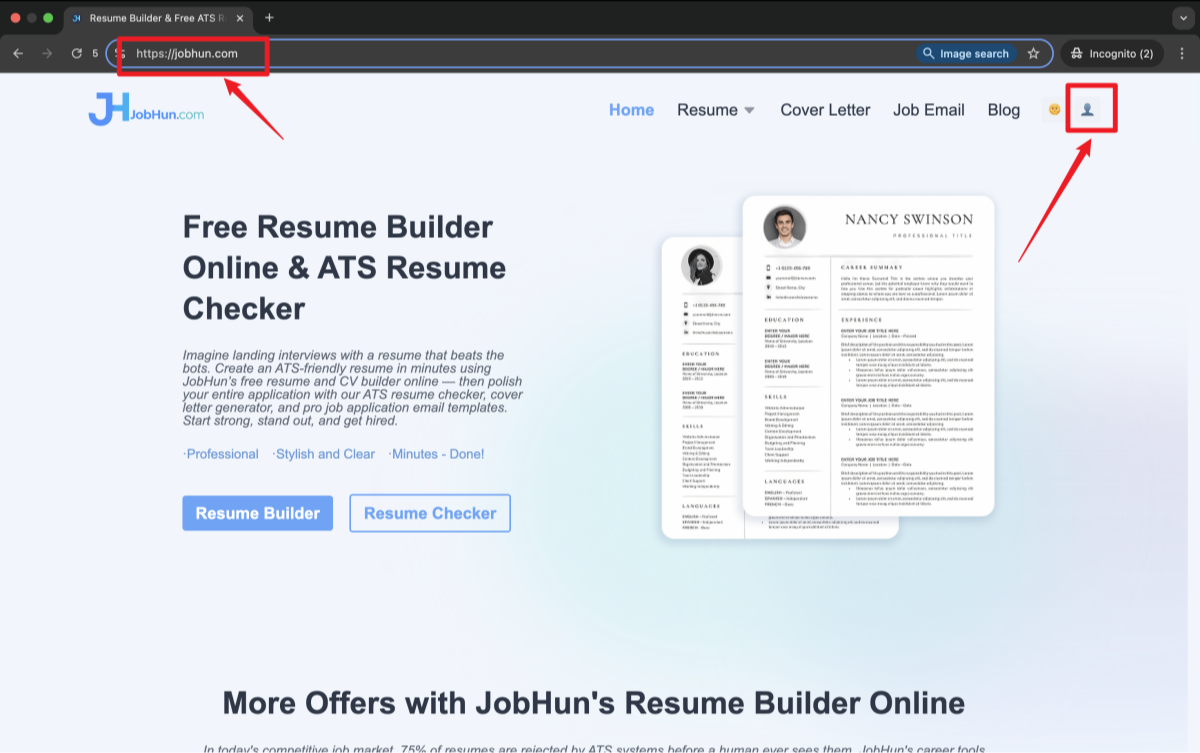
Access the Dashboard
You’ll be directed to the Webapp page.
If you're not signed in yet, the site will show you login or signup options.
Choose one:
- Click “New Resume” to start
- Or hit “Go to Login” in the top right
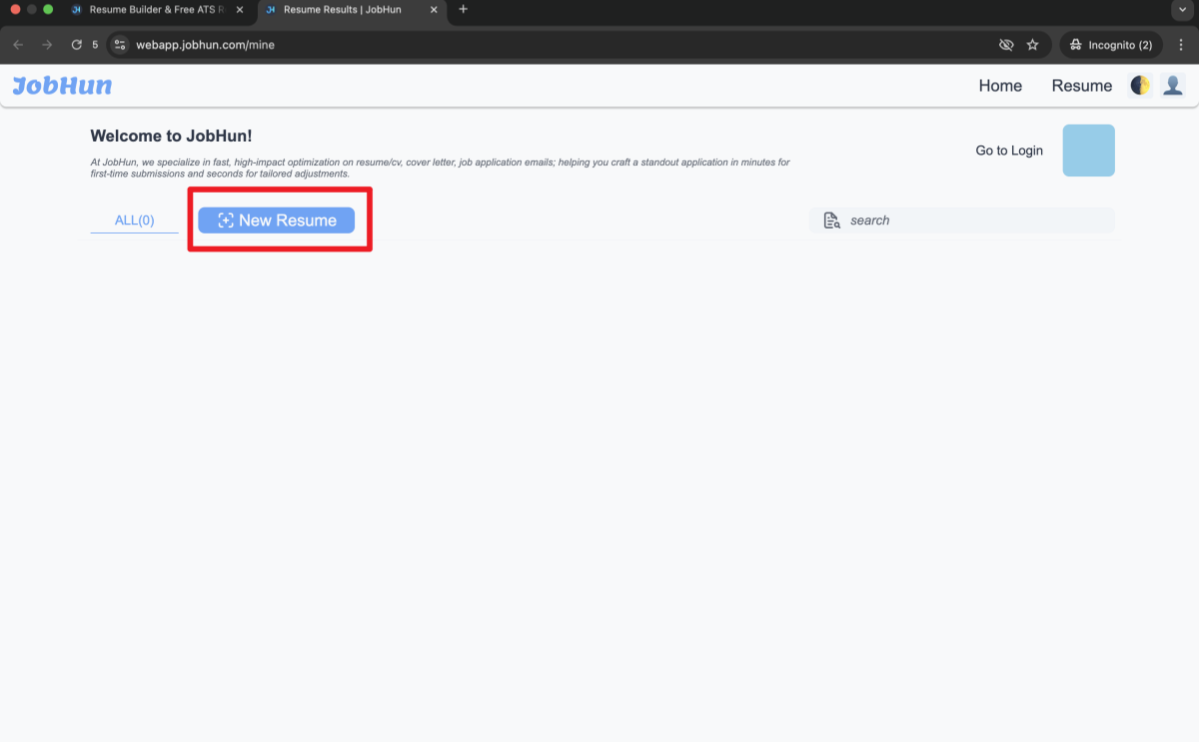
Sign In or Register
Two ways to log in:
- Use your Google account for one-click access
- Or manually enter your name, email, and password, then press “Go”
After logging in, your dashboard will load with your profile info.
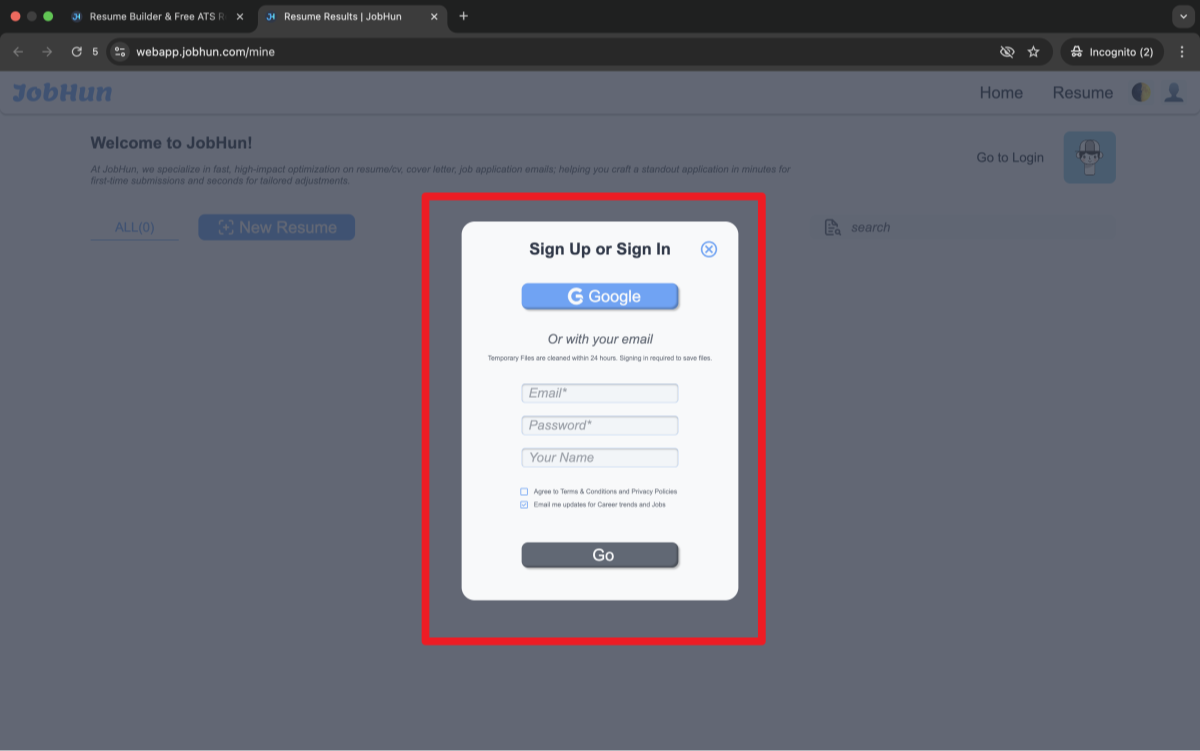
Start Your Resume
Check the top-right corner for your account details to confirm you're signed in.
Click “New Resume” again to launch the builder.
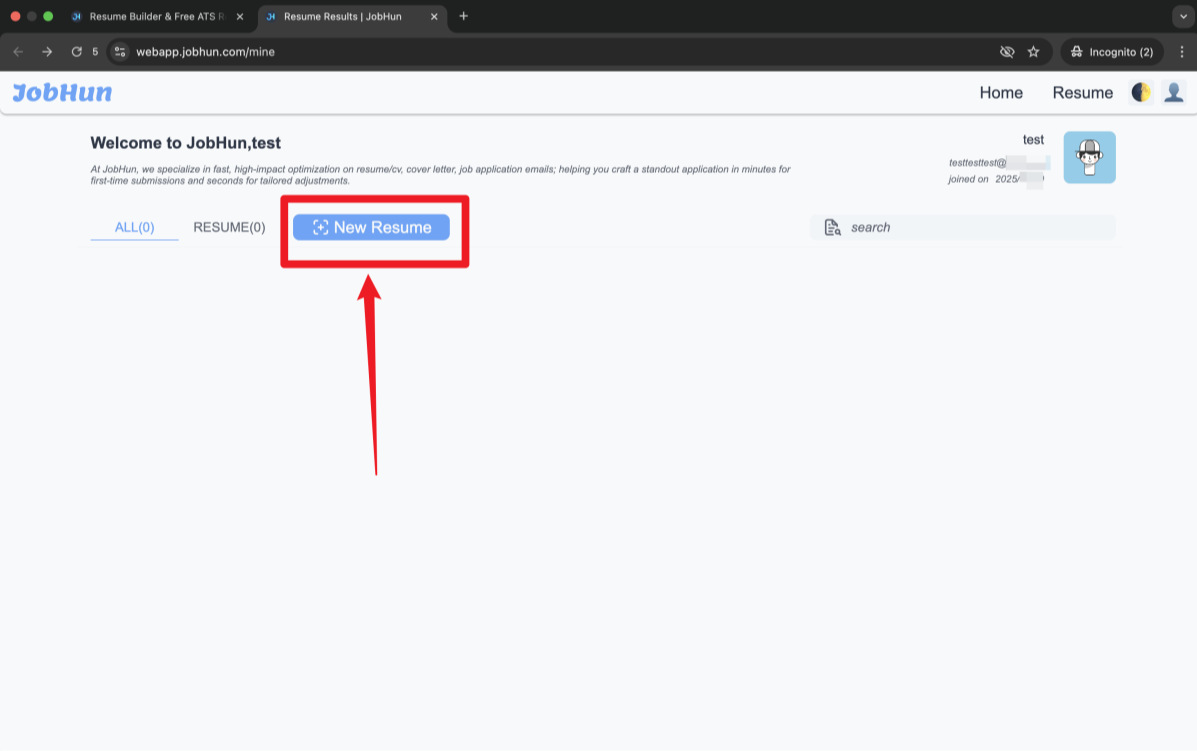
Edit & Finalize
The builder has a two-part layout:
- Left panel: Add and organize sections like Summary, Experience, and Skills
- Right panel: See your changes in real-time
Choose your workflow:
- Let AI generate your resume
- Edit sections manually
- Adjust layout, polish content, and download when ready

What to Include When Listing Promotions on Resume
When showing a promotion on your resume, your focus should be twofold: first, clearly communicate what earned you the promotion, and second, emphasize the new responsibilities, skills, and measurable achievements that came with your elevated role.
Start by illustrating how your impact on the company grew—back your claims with concrete examples, metrics, and specific accomplishments that demonstrate your increased value. Highlight key tasks that showcase your personal initiative, leadership, and any innovative approaches you introduced to the role.
Above all, make it clear that you are motivated, continuously developing your skills, and fully capable of taking on greater challenges while delivering measurable results that benefit your team and organization.
How You Earned the Promotion
When describing how you earned your promotion, focus on the qualities and achievements that set you apart from your peers. Use concise, impactful bullet points to illustrate:
- Outstanding accomplishments that surpassed expectations and contributed directly to company goals, such as: “Surpassed sales targets by 25%, leading to a promotion within six months.”
- Recognition for leadership, collaboration, or problem-solving abilities, for example: “Awarded Employee of the Month for resolving client escalations, mentoring new hires, and boosting customer satisfaction scores by 15%.”
- Innovations or process improvements that delivered measurable benefits, like: “Implemented a new workflow reducing processing time by 20%, accelerating project delivery.”
Keep these points concise and explicitly link each achievement to why you were promoted.
Highlighting Job-Specific Projects, Tasks, and Results
In your new role, it’s crucial to showcase projects and responsibilities that reflect your expanded scope and influence:
- Detail high-impact projects you led or significantly contributed to, for example: “Managed a $1M marketing campaign that increased brand awareness by 30%.”
- Emphasize tasks that demonstrate leadership, strategic thinking, and decision-making capabilities.
- Whenever possible, quantify your results to make your achievements tangible, such as: “Optimized team workflows, increasing efficiency by 15%.”
- Align these skills and accomplishments with the requirements of the job you’re targeting to ensure relevance.
Demonstrating New Skills and Areas of Expertise
Promotions often come with opportunities to acquire new skills or deepen your expertise. Make sure to highlight these developments by:
- Mentioning any technical skills, certifications, or tools you’ve mastered in your new role, for example: “Certified in Google Analytics, enabling improved data-driven marketing decisions.”
- Providing examples that showcase your soft skills—such as leadership, communication, or adaptability—that have grown through your promotion.
- Showing increased visibility and influence within the company, for instance: “Appointed as a representative on cross-departmental committees, leading strategic projects and presenting quarterly company-wide updates.”
Clearly illustrate how these new skills and experiences enhance your value as a candidate and prepare you for future challenges.
FAQs About Listing Promotions on a Resume
Should I list promotions separately or together?
If your job roles were very similar with gradually increasing responsibilities, stacking them under one company entry is often best—it keeps your resume clean while clearly showing your growth. However, if each role was distinct with different functions or departments, listing them separately helps highlight your diverse skills and experience.
What if I was promoted but my job didn’t change much?
Even if your day-to-day duties stayed largely the same, it’s important to mention the promotion. Briefly explain the reason behind it—such as consistent top performance, leadership potential, or recognition of your contributions—to show your value and upward momentum.
Can I list the same company twice on my resume?
Absolutely! You can either consolidate all roles under one company header using stacked entries or list each position as a separate entry. Both formats are acceptable—choose the one that best tells your career story and fits the job you’re applying for.
How do I show promotions if I changed departments within the company?
In this case, listing each role separately and specifying the department name is ideal. This not only highlights your promotions but also showcases your adaptability and broad skill set across different areas of the business.
Should I include promotion dates on my resume?
Yes, including dates for each role or promotion is crucial. It provides recruiters with a clear timeline of your career progression and helps them understand how quickly you advanced, which can be a strong indicator of your performance and potential.
Conclusion
Effectively showcasing your promotions on your resume is a powerful way to demonstrate your growth, dedication, and increasing value to employers. Whether you choose stacked entries, separate listings, or a hybrid approach, the key is to clearly highlight how your responsibilities expanded, the impact you made, and the skills you gained along the way.
By presenting your career progression thoughtfully and strategically, you make it easier for hiring managers to see your potential and readiness for the next challenge. Use these tips to craft a resume that not only reflects your achievements but also sets you apart in a competitive job market.





